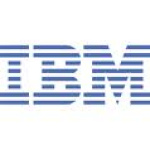- Branche: Computer
- Number of terms: 98482
- Number of blossaries: 0
- Company Profile:
Sometimes referred to as “Big Blue” IBM is a multinational corporation headquartered in Armonk, New York. It manufactures computer hardware and software and provides information technology and services.
(1) A categorization or grouping of objects that share similar behaviors and circumstances.<br />(2) In OSI, a way of grouping things of the same type, such as by country, region, or application entity. A set of common object classes has been defined by the ISO/CCITT directory standards.<br />(3) A template that is used to define the attributes and methods of an object.
Industry:Software
(1) A category of similar resources that are defined in the RACF class descriptor table (CDT).<br />(2) A group of resources that have attributes, actions, and other characteristics in common.<br />(3) An attribute of a resource that is used to group resources according to the subsystem to which they belong and the purpose for which they are used.
Industry:Software
(1) A central point at which all inbound calls are handled by a group of individuals on a controlled sequential basis. Call centers are usually a front end to a business such as airline ticketing or mail order.<br />(2) A place staffed by users in the customer service representative access group, who can perform some functions on behalf of a customer. For example, they can update customer information, including the password; they can also update orders or place a new order.
Industry:Software
(1) A character or bit string with a length of zero.<br />(2) A string containing no element.
Industry:Software
(1) A character or graphic string whose length is not fixed, but variable within limits. See also fixed-length string.<br />(2) A character, graphic, or binary string whose length is not fixed but can range within set limits.
Industry:Software
(1) A character other than a 7-bit ASCII character. An extended character can be a 1-byte code point with the eighth bit set (ordinal 128 through 255).<br />(2) Double-byte characters that are stored in a DBCS font file, not in the hardware of a DBCS-capable work station. When displaying or printing extended characters, the work station receives them from the DBCS font table under control of the extended character processing function of the operating system. See also basic character.
Industry:Software
(1) A character other than a digit, a letter, or one of these characters: $, #, @, ., or _. For example, the following characters are special characters: *, +, and %.<br />(2) In COBOL, a character that is neither numeric nor alphabetic.<br />(3) In REXX, a token that acts as a delimiter when found outside a literal string. Special characters include the comma (,), semicolon (;), colon (:), right parenthesis ()), left parenthesis ((), and the individual characters from the operators.<br />(4) A character that is not alphabetic, numeric, or blank. For example, a comma (,) or an asterisk (*).<br />(5) A non-alphabetic and non-numeric character, such as %, &, /, ?, ], and a number of other characters that have a unique function in the SQL language.
Industry:Software
(1) A character represented by a plus sign (+) that lets a command be extended to more than one line.<br />(2) In REXX, a character represented by a comma that lets a clause be extended to more than one line. This character is functionally replaced by a blank and cannot be used in the middle of a string or comment.
Industry:Software
(1) A character string attached to the end of a file name that helps identify its file type.<br />(2) A distinguished name that identifies the top entry in a locally held directory hierarchy. Because of the relative naming scheme used in Lightweight Directory Access Protocol (LDAP), this suffix applies to every other entry within that directory hierarchy. A directory server can have multiple suffixes, each identifying a locally held directory hierarchy.
Industry:Software
(1) A character string considered as a unit for a given purpose.<br />(2) A fundamental unit of storage that refers to the amount of data that can be processed at a time. Word size is a characteristic of the computer architecture. See also doubleword, halfword.
Industry:Software
